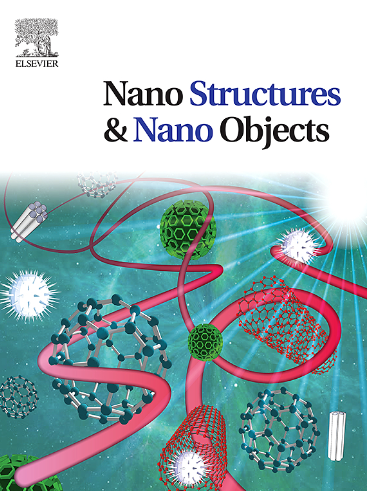Exploring the potential of In-MOF to detect L-histidine through the degradation of metal-organic frameworks
IF 5.45
Q1 Physics and Astronomy
引用次数: 0
Abstract
This study investigated the capabilities of In-MOFs for detecting l-histidine concentrations through the controlled degradation of frameworks. The In-MOF was synthesized using a microwave-assisted method and characterized using a variety of analytical techniques, including X-ray diffraction (XRD), transmission electron microscopy (TEM), BET surface area technique, and ATR-FTIR spectroscopy. The l-histidine concentrations were quantified using both UV-Vis spectroscopy and electrochemical impedance spectroscopy (EIS). In our research, we found that In-MOFs are promising sensing materials for L-histidine detection, particularly in relation to MOF degradation. The results of this study advance the application of In-MOFs in advanced biosensing technologies.
求助全文
约1分钟内获得全文
求助全文
来源期刊

Nano-Structures & Nano-Objects
Physics and Astronomy-Condensed Matter Physics
CiteScore
9.20
自引率
0.00%
发文量
60
审稿时长
22 days
期刊介绍:
Nano-Structures & Nano-Objects is a new journal devoted to all aspects of the synthesis and the properties of this new flourishing domain. The journal is devoted to novel architectures at the nano-level with an emphasis on new synthesis and characterization methods. The journal is focused on the objects rather than on their applications. However, the research for new applications of original nano-structures & nano-objects in various fields such as nano-electronics, energy conversion, catalysis, drug delivery and nano-medicine is also welcome. The scope of Nano-Structures & Nano-Objects involves: -Metal and alloy nanoparticles with complex nanostructures such as shape control, core-shell and dumbells -Oxide nanoparticles and nanostructures, with complex oxide/metal, oxide/surface and oxide /organic interfaces -Inorganic semi-conducting nanoparticles (quantum dots) with an emphasis on new phases, structures, shapes and complexity -Nanostructures involving molecular inorganic species such as nanoparticles of coordination compounds, molecular magnets, spin transition nanoparticles etc. or organic nano-objects, in particular for molecular electronics -Nanostructured materials such as nano-MOFs and nano-zeolites -Hetero-junctions between molecules and nano-objects, between different nano-objects & nanostructures or between nano-objects & nanostructures and surfaces -Methods of characterization specific of the nano size or adapted for the nano size such as X-ray and neutron scattering, light scattering, NMR, Raman, Plasmonics, near field microscopies, various TEM and SEM techniques, magnetic studies, etc .
 求助内容:
求助内容: 应助结果提醒方式:
应助结果提醒方式:


